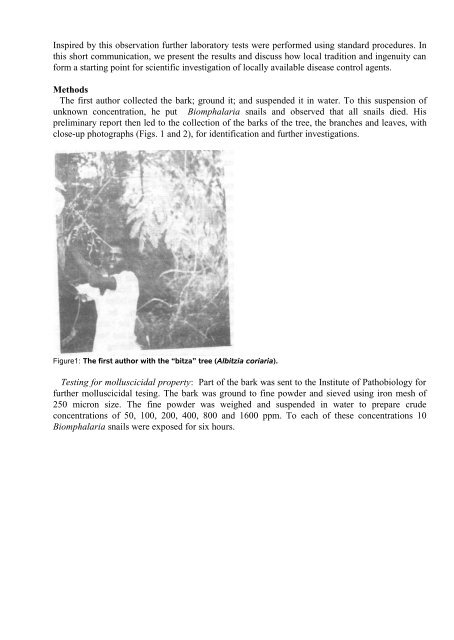Original article - Ethiopian Review
Original article - Ethiopian Review
Original article - Ethiopian Review
- No tags were found...
Create successful ePaper yourself
Turn your PDF publications into a flip-book with our unique Google optimized e-Paper software.
Inspired by this observation further laboratory tests were performed using standard procedures. Inthis short communication, we present the results and discuss how local tradition and ingenuity canform a starting point for scientific investigation of locally available disease control agents.MethodsThe first author collected the bark; ground it; and suspended it in water. To this suspension ofunknown concentration, he put Biomphalaria snails and observed that all snails died. Hispreliminary report then led to the collection of the barks of the tree, the branches and leaves, withclose-up photographs (Figs. 1 and 2), for identification and further investigations.Figure1: The first author with the “bitza” tree (Albitzia coriaria).Testing for molluscicidal property: Part of the bark was sent to the Institute of Pathobiology forfurther molluscicidal tesing. The bark was ground to fine powder and sieved using iron mesh of250 micron size. The fine powder was weighed and suspended in water to prepare crudeconcentrations of 50, 100, 200, 400, 800 and 1600 ppm. To each of these concentrations 10Biomphalaria snails were exposed for six hours.




![to read the full report [pdf, Amharic] - Ethiopian Review](https://img.yumpu.com/52737829/1/190x245/to-read-the-full-report-pdf-amharic-ethiopian-review.jpg?quality=85)











